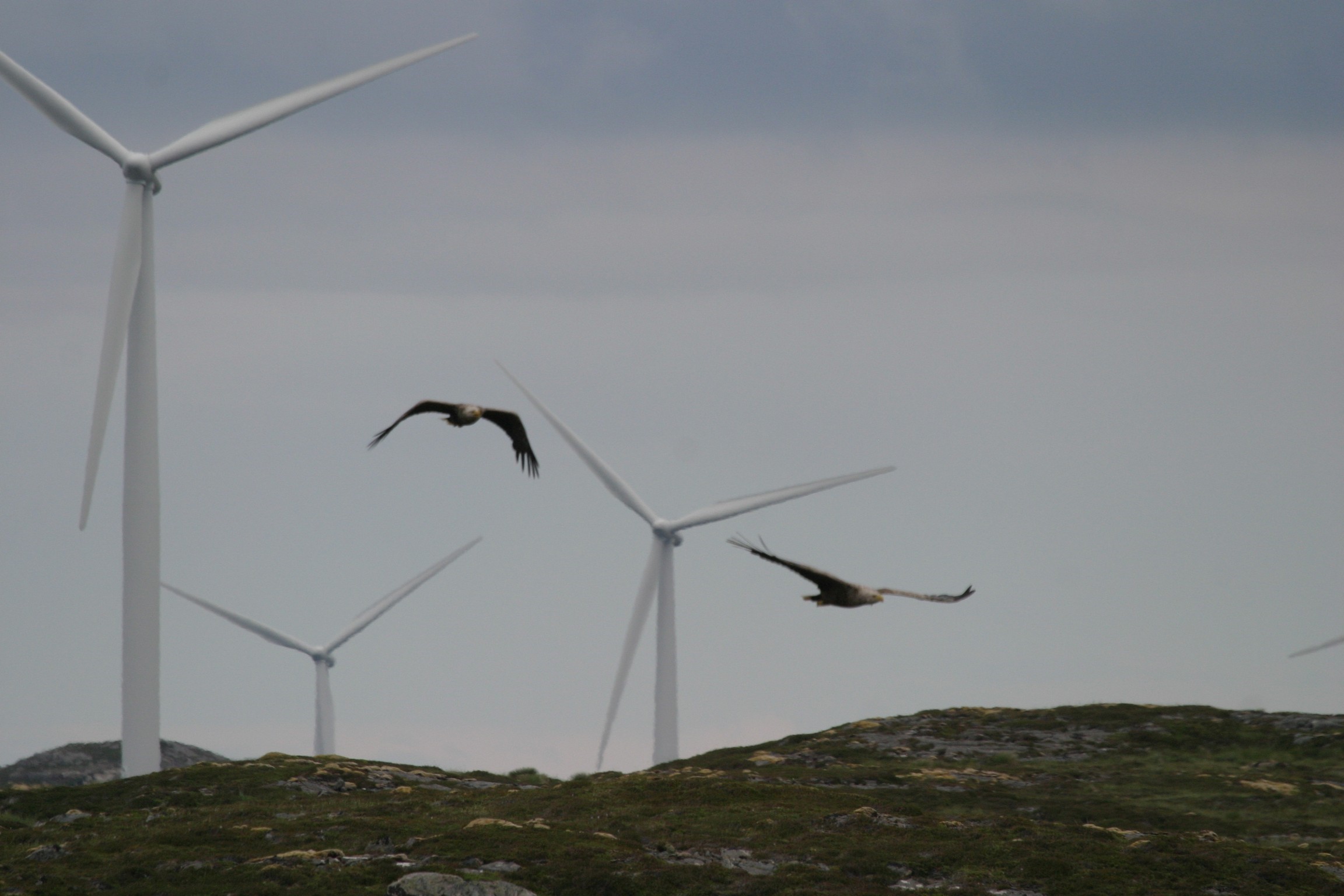Journal of Applied Ecology’s March Editor’s Choice tests the efficacy of an automated curtailment system in reducing counts of fatalities of eagles. Associate Editor, Kulbhushansingh Suryawanshi, introduces the selected article by Chris J W McClure, which shows that this method substantially reduced eagle fatalities, offering potential opportunities to lessen the conflict between wind energy and raptor conservation.
We need greener renewable energy to fight climate change, but what can we do if it conflicts with species conservation?
Wind is an important source of clean and renewable energy. It has the potential to produce clean energy many times the level of current global electricity production. However, wind turbines pose a serious threat to the survival of many bird species, especially large raptors such as eagles and vultures.
It is estimated that collisions with wind turbines caused between 140,000 and 328,000 bird mortalities annually before 2013 in United States alone – species which are already under severe threat of extinction due to habitat destruction, targeted and accidental poisoning, illegal trade, collision with power lines etc.
Indeed, such collisions are rapidly emerging as one of the most significant threats to the conservation of raptors worldwide. By mis-judging the movement of the blades from the wind turbines, they get chopped down – literally. High mortality rates among adult birds could cause severe population declines, as most of these species are long-lived and slow reproducing
Raptors are the apex predators of the bird world and they provide significant ecosystem services through their impact on rodent populations. For raptors, the growth of wind turbines may match and even surpass the DDT crisis of the sixties and seventies if nothing is done soon.

In their study, McClure and colleagues test a camera based system that detects flying objects, classifies them, and slows down or stops individual turbines to avoid potential collisions with eagles. The authors identified two wind power stations within 15 km of each other in Wyoming USA. One was used as a treatment site, while the other was a control site. They placed 44 such units within view of each turbine at the treatment site, which contained 110 turbines.
Fatality rates were estimated for both sites using carcass surveys, before and after the deployment of the intervention. Furthermore, the authors also incorporated the possibility that all carcasses would not be detected, and hence included a detection parameter in their analysis.

They estimate an 82% reduction in eagle fatality rate at the treatment site relative to the control site. There are two important messages to take from here. First, that this technology has the potential to reduce eagle fatalities and help with raptor conservation worldwide. Second, that there is the need for further improvement.
This technology did not eliminate eagle collisions with wind turbines. This is one of those few occasions where technological innovation can completely eliminate a conservation threat. Until such improvements are made, this needs to be used in conjuncture with other mitigation actions.
Monitoring and evaluation of conservation interventions is critical to optimise the use of limited conservation funding. It is never easy to conduct assessment of conservation at large scales.
The authors of this work therefore need to be commended for their use of the Before-After-Control-Impact (BACI) assessment of this new technology-based solution. A simpler Before-After assessment would not have been adequate because that would not have distinguished between the declines in eagle fatalities cause by the decline in eagle population itself, against the decline due to the intervention.
The full article Editor’s Choice article, Eagle fatalities are reduced by automated curtailment of wind turbines, is free for a limited time in Journal of Applied Ecology
